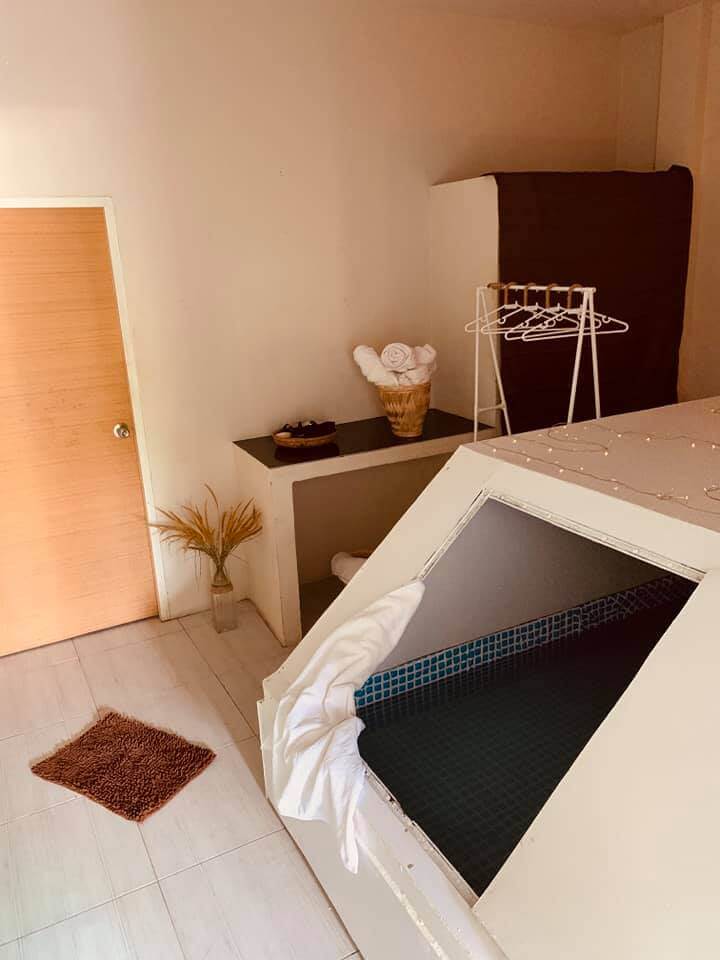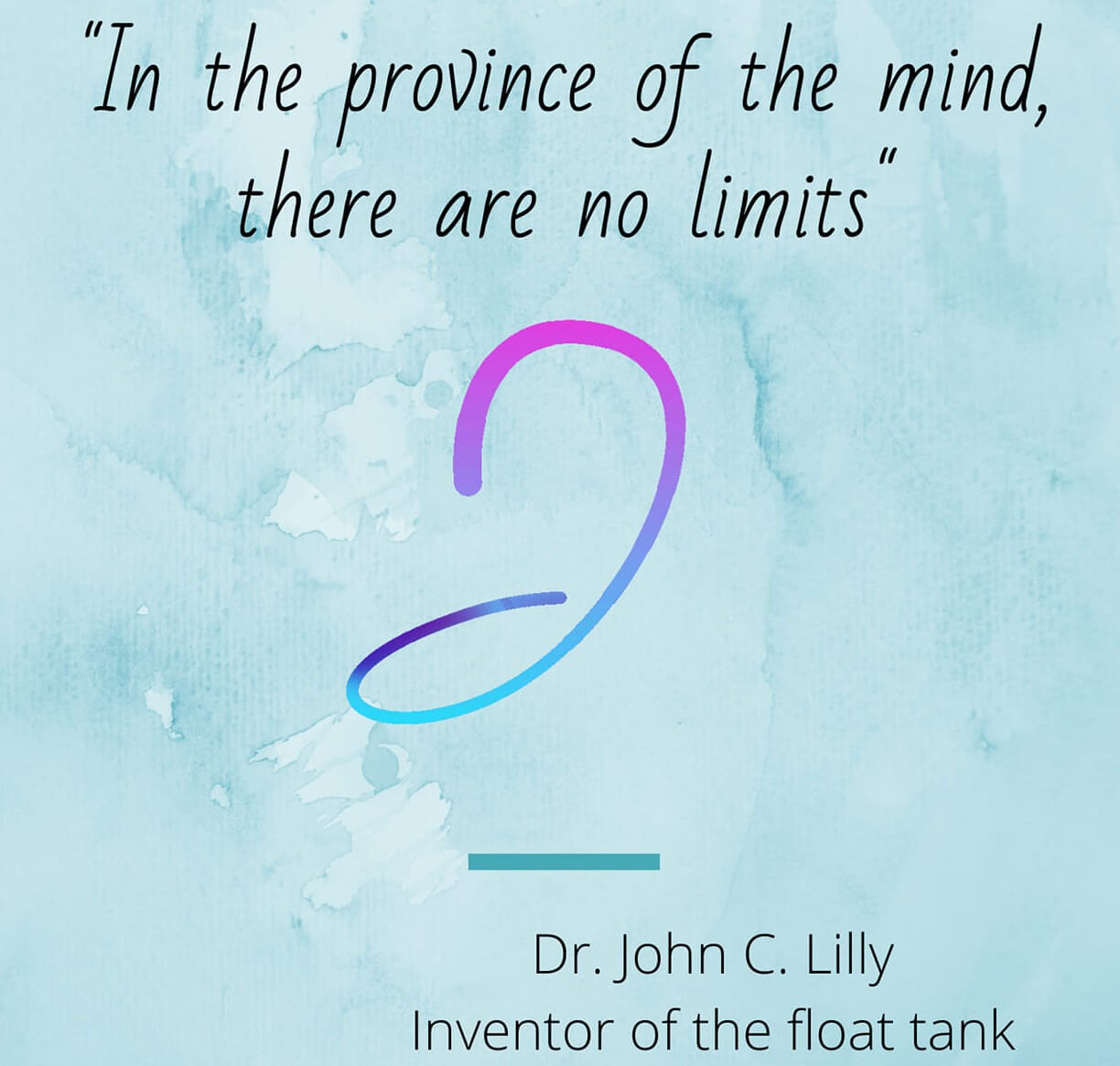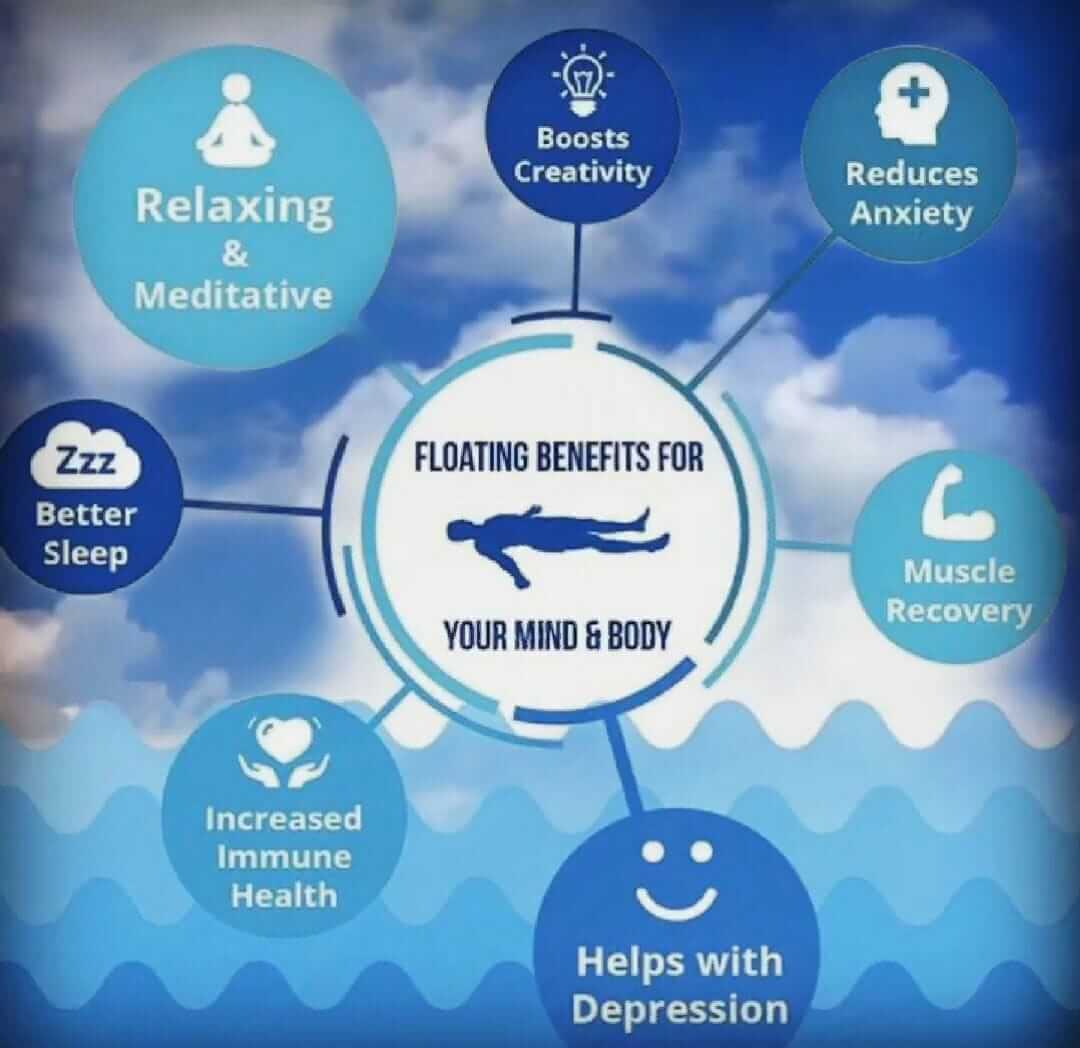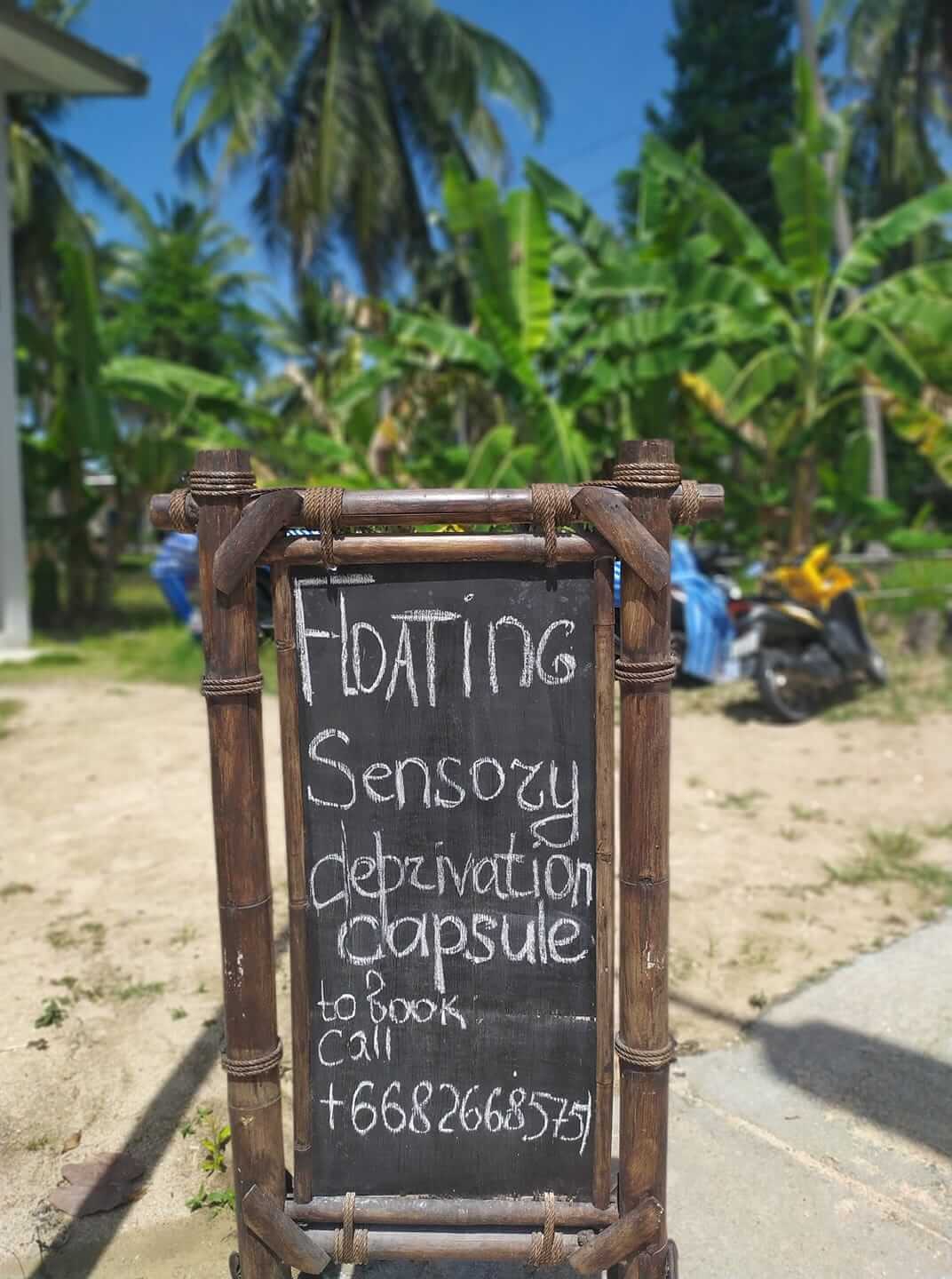We put ourselves in a sensory deprivation tank (floating tank), of course separately from each other 😉. Here we tell you what it is, how it came about, what it is good for, what you should pay attention to and what our personal impressions were.
What is a Deprivation Tank?
Sensory deprivation means that Withdrawal of sensory impressions. The tank or the chamber is about 30 cm deep Water filled that on body temperature is held. The water will be about 300 kg Epsom salt added. Epsom salt, also called Epsom salt, is actually magnesium sulfate (MgSO4), with which the highly saturated brine is produced in which our body can lie without sinking. Your body feels like you are in weightlessness float, you don't feel anything on your skin due to the temperature. It is also in the tank completely dark, you see absolutely nothing. Also Sounds do not penetrate. On request, it is possible to leave a subtle light source on, or to have soft music played. One unit lasts 60 Minutes.
This is what the tank we tried looks like:

Who invented it?
dr John C Lilly constructed the first floating systems in the course of his research from 1954 to 1956. He examined on National Institutes of mental Health the activity of the brain when it is completely isolated from external stimuli. The former Specialist colleagues Dr. Lillys viewed his self-experiments with a fair dose of skepticism and also right suspiciously, because the common doctrine said that total withdrawal of stimuli makes people mentally ill. Dr. Lilly, however, found out "altered states of consciousness”And found the“completely new inner experiences“Most helpful for his personal development, and for all areas of life in general. As long as it was legal, Lilly also experimented with LSD and later with ketamine in the tank.
Until the construction of the first commercial floating tank 1977 became exclusively scientific in the fields of Behavioral research, orthopedics and pain medicine researched.
The mid / late 70s boarded the New Age Movement in the USA the floating tanks and gave them the name Samadhi tanks. Samadhi denotes one State of consciousnessthat goes beyond waking, dreaming and deep sleep and in which discursive thinking should cease.
The tanks then gained a foothold in the UK, Australia and the Netherlands around the mid-80s. Late 90s Years when the wellness trend really picked up speed, the tanks then spread throughout Europe.

What are the benefits?
The absence of external sensory stimuli really helps you with this deep zu relax and reduce stress, as otherwise only works with meditation or autogenic training, for example. Your thoughts become clear, yours Focus intense, yours creativity has free rein.
The Epsom salt help by Sore muscles and tension, binds moisture in the Skin and contributes to detoxification. Fun fact: Your skin won't wrinkle even though you've been in the water for an hour - thanks to the Epsom salt!
Also the so-called Rrestricted Environmental Stimulation Therapy - REST against Anxiety and depression, as well as in the Pain management and in the treatment of Sports injuries employed.
It is of good success at Insomnia, PTSD and addiction cessation reported. The floating in the tank works antihypertensive and strengthens that Immune system.
First of all, the tank is an excellent tool around Self-knowledge to get to know oneself better without adopting another belief system.

What should you watch out for?
Do not go freshly shaved or waxed in the tank, the salt burns like hell! take Jewelry off and remove contact lenses before you lie down in the salt water. Just take one light meal See you at least half an hour in advance and avoid stimulating drinks, as this can negatively affect your ability to relax.
Do not go under Under the influence of alcohol or drugs in the tank, even if the water is only about 30 cm deep, you can drown in it if you are no longer in control of your body. This risk also affects epileptic. People with very low blood pressure can suffer a circulatory collapse and are therefore also exposed to the risk of drowning.
Many people report on hallucinationswhich disappear again at the latest when leaving the tank. However, if you suffer from a psychotic illness, this can trigger a flare-up.
Who under claustrophobia suffers can have problems in the tank.
With open wounds, Diarrhea, infectious diseases, and menstrual periods do not use the floating tank, and that should go without saying.
If you have cardiovascular disease, asthma or kidney problems, you should go with one Doctor talkbefore you float.
Where's that deprivation tank?
We were in seathanu consider Acrobat floating, to be found on Middle Road, right next to Devi Deli or opposite the big signpost to Genesis Yoga.

Personal experiences
Elizabeth: First of all I would like to mention the nice preliminary talk, everything is explained and you can ask questions. For the first few seconds I had to fight the urge to open the door again immediately. This is one slightly claustrophobic tendency owed. I found floating itself interesting because it was me into meditation in a flash catapulted. Since me Visualizations always easily fallen I was not surprised by the brief hallucinations. I found that small, glowing butterflies very delightful in the tank. I felt a slight pain in the neck and shoulder area, but was pointed out at the preliminary talk that this happens to most people during the first session. Why three units recommended to get a complete picture of floating. I was able to remedy this by clasping my hands on the back of my head.
My conclusion: GREAT! I will definitely do this again. For me they stand deep relaxation and the introspection In the first place, the calm and clarity that comes over my consciousness and thus gives the subconscious more space.
Nik: When this strange “box” was opened for me, I briefly considered whether I could really feel comfortable in it... The first few minutes were extremely strange: floating, in the dark and this now for an hour!?
In the end, the time went by in a flash and after a few minutes I had already lost any feeling for the size of the room in which I was floating around.
After that, my first thought was that it was very nice and also kind of relaxing was ... I could well imagine floating again at some point!
For me, the real experience didn't begin until a few hours later: When I realized how extremely relaxed I “glided” through the rest of my day am! I almost felt a little high! Even the next day felt like I just got back from vacation.
After talking to Elisabeth and other people with floating experiences, I now know that not everyone is like that impressive aftermath has. Maybe it was a tougher one for me."shut down" because I am exposed to a lot of stimuli from laptop and smartphone every day, often without any other compensation? Of course, it can only be guesswork ... Due to an injury I haven't had a second floating experience since then, but I'm looking forward to getting back into the tank soon!

